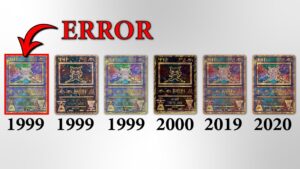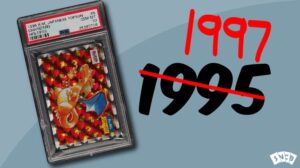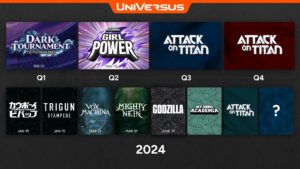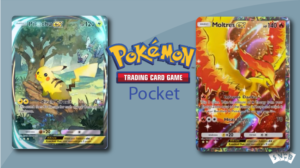Holo Bleed- What is It, Does it Affect Grading? (with examples)
-
By: Oliver Copeland
- Published:
- Last Updated: January 9, 2024
The manufacturing process of trading cards and Pokémon cards, in particular, is largely unknown as the company tightly guards its secrets. However, there have been small windows into the process over the years, allowing us to piece together most of the process minus just a few minor details. Because of this, we have a pretty good idea of how holo bleed works.
Holo bleed is when the holo treatment on the card stock shows through the opaque layers of ink, resulting in a slight holo effect where there normally shouldn’t be one.
What is holo bleed and how does holo bleed happen?
To fully understand what holo bleed is, we need to understand how it happens.
When Pokémon cards are printed, they are not each printed individually, as one might think. Instead, large sheets go through the printers where many cards are printed on, then later cut into individual cards. It is critical to understand that these large sheets arrive at the printing facility already treated with the holofoil effect. This is called foil card stock.
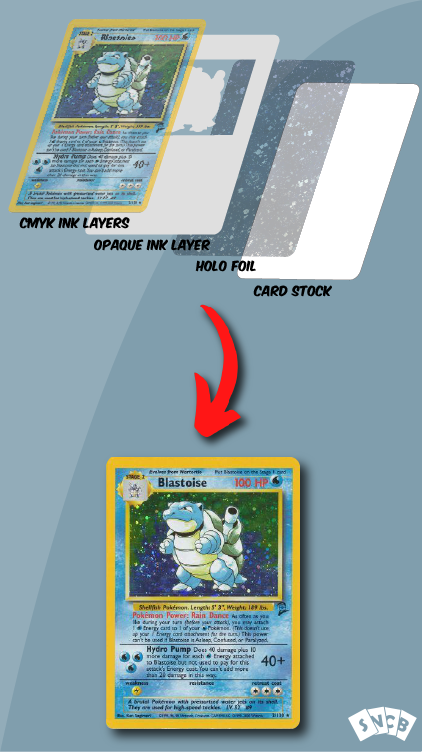
Since the card stock comes already foil treated, then everything else gets printed on top of the foil. As the foil card stock moves through the production line, an opaque white layer is then printed onto the sheet. This layer determines the areas of the cards where the holofoil effect will be unseen. After this, then the multiple layers of ink are printed over top.
Holo bleed is when the foil treatment shows through the white opaque layer of the card, creating a slight holofoil effect where there shouldn’t be one. Some holo patterns tend to show through more than others, such as the confetti holo pattern, (like the McDonald’s Collection) otherwise, the issue is speculated to sometimes be thin layers of ink.
Pokémon cards are made using offset printing plates. This means that the Black, White, Yellow, Cyan, and Magenta layers of ink are all applied separately.
The first plate to print is the white plate. The image below shows a factory worker performing a quality control check of the white plate layer. This is the opaque layer that prevents the holo foil from shining through. If this layer is too thin, a holo bleed may occur.
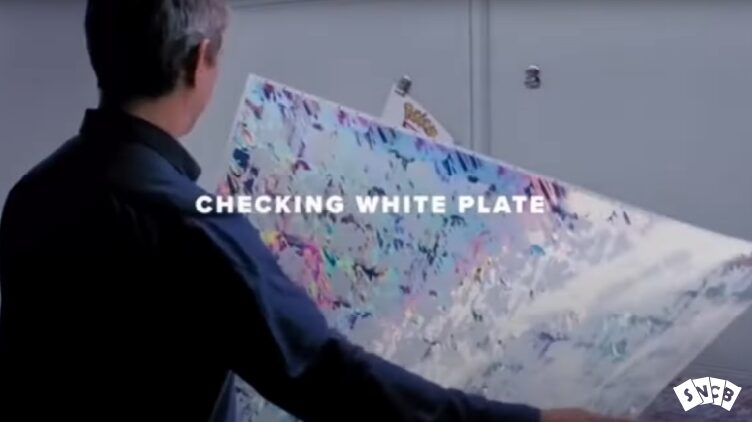
But Why is it so Common?
If you think that Pokémon card holo bleed has become more common in recent years, you’re correct.
First of all, the demand for Pokémon cards has risen quite substantially since 2020. Many printing errors that used to be rare, are now common as so many more packs are being opened, and social media shares grow. But that’s not all.
As demand increases to an all-time high, quality has to suffer. The Pokémon Company International has spoken publically about the demand and how they are running their production process at full tilt. It should be no surprise that a high-volume push like this would result in lower quality. And that’s exactly what we are seeing. If holo bleed really is a result of thin ink layers, high production has to be the culprit.
Other trading card games such as YuGiOh, Magic: The Gathering, and Digimon aren’t experiencing holo bleed beyond the norm. Well, not like Pokémon anyways.
Will holo bleed affect the grading process?
Holo bleed does not affect the grading process and will not hurt the card’s chance of receiving a 10.
In some trading card games, holo bleed can indicate a counterfeit card. This isn’t as common in Pokémon, as the authentic cards often experience poor quality control when in high demand. In the sports card world, holo bleed is less common and usually indicative of a fake card.
For a while, PSA even refused to grade holo bleed cards but resumed in 2021. Presently, all grading companies will grade a Pokémon card with any degree of holo bleed and some (like CGC) may even offer to recognize the holo bleed on the label.
Holo bleed examples
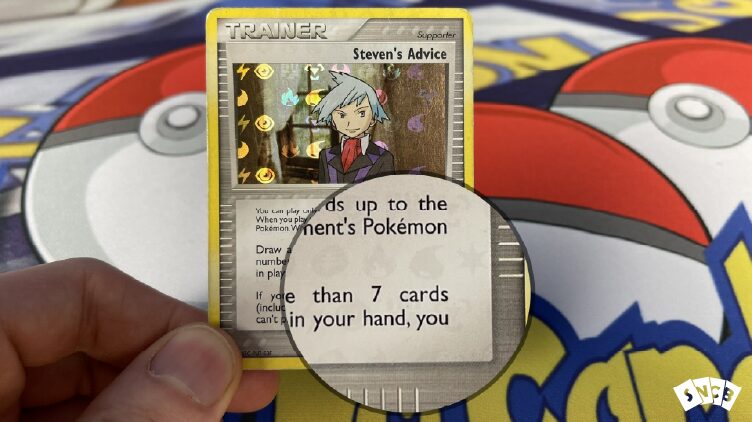
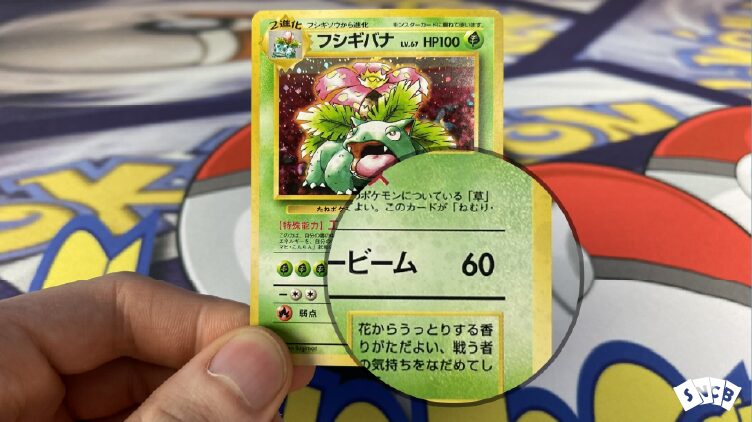
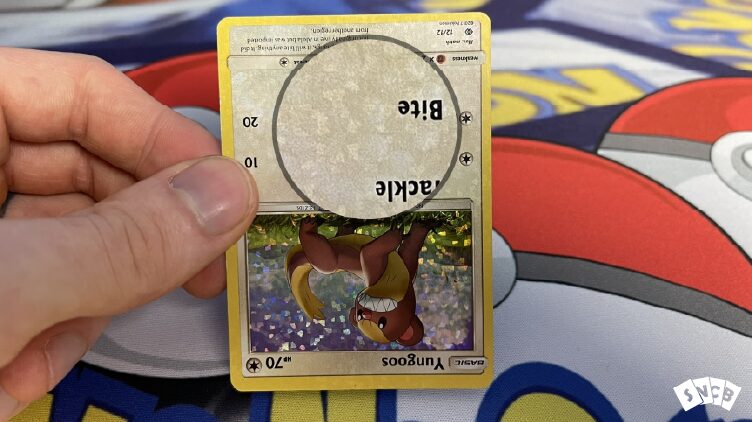
Are holo bleed cards worth more?
It depends. There are a lot of factors to consider when selling a holo bleed card.
- Is the non-holo bleed version of the card rare or expensive?
- Is it common for that card to have holo bleed?
- What is the severity of the holo bleed?
The card is going to be the biggest factor. For example, a common card of low value isn’t going to be desirable whether it has holo bleed or not. But the value of a 1st edition Charizard is going to benefit greatly from holo bleed.
Some cards are known to have holo bleed, such as the McDonald’s Pokémon cards, making them less desirable.
Check eBay to see some crazy holo bleed cards for sale.
Holo Bleed in YuGiOh cards
So far we’ve only covered Pokémon cards, but YuGiOh cards are also often found to have holo bleed errors.
The printing process of all trading cards is essentially the same, so YuGiOh cards can often be found with similar errors. Just like the confetti holo pattern for Pokémon cards, YuGiOh suffers from holo bleed when it comes to prismatic or secret rare cards, with their cross-hatched holo pattern often resulting in some holo bleed.
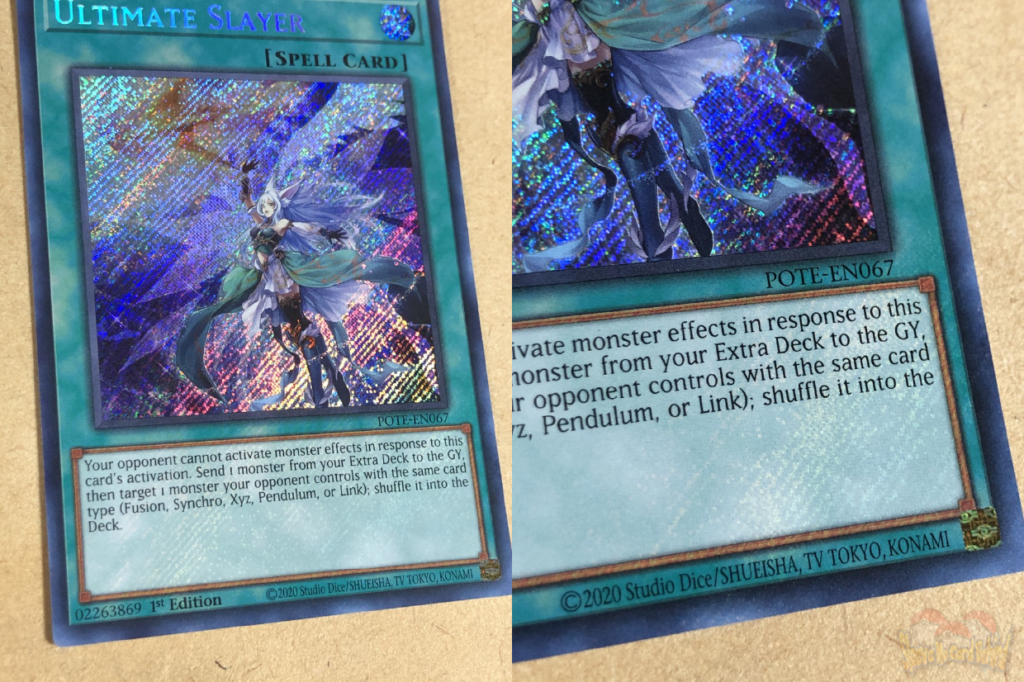
Final thoughts on holo bleed
To a beginner or perhaps to an untrained eye, it may not be apparent. It can sometimes take a specific angle of light to show the holo bleed, while it sometimes is immediately detectable. The 25th Anniversary McDonald’s Collection set was infamous for its holo bleed. In fact, it is the holo pattern itself that is so prone to error. Other cards are very rare to find with holo bleed. If you notice a slight effect on any of your cards, congrats, but it’s probably not worth much. Holo bleed cards are worth a lot when the card itself is already valuable.

